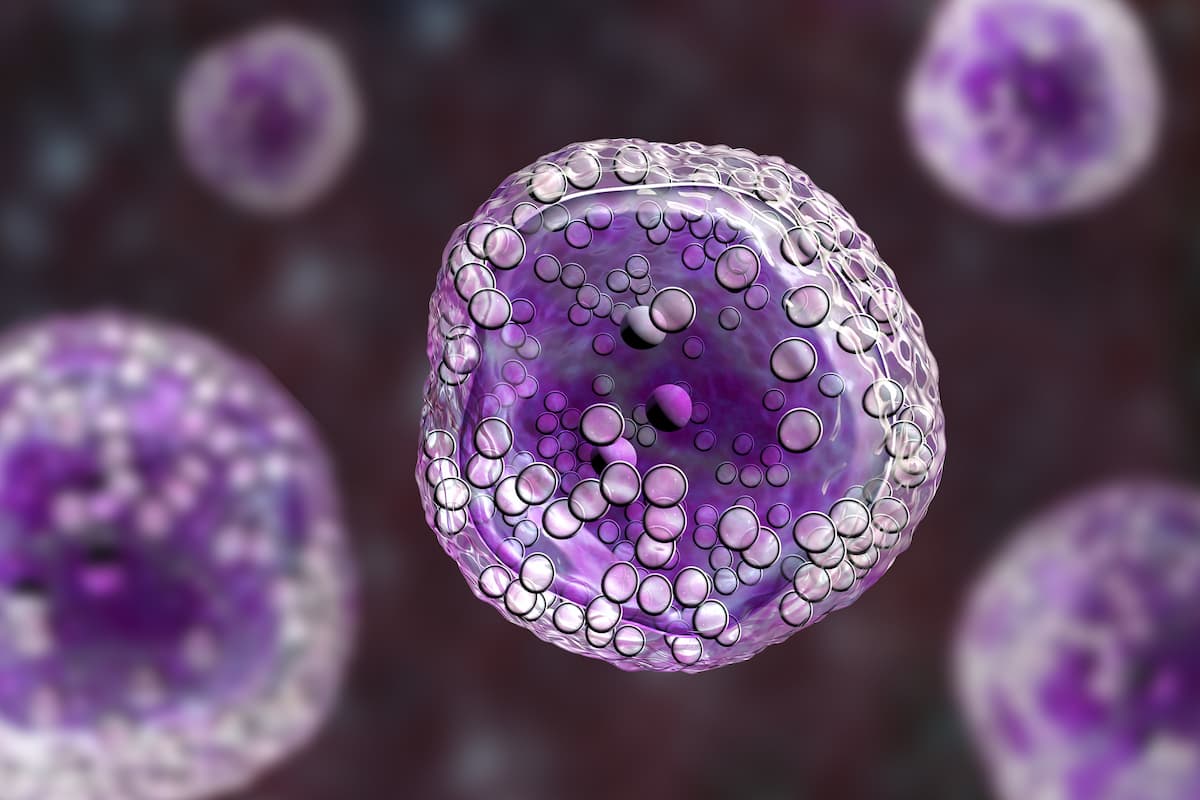Reduced Dose Talquetamab Yields Responses, Safety in R/R Multiple Myeloma
Data from the phase 1/2 MonumenTAL-1 studies support flexibility to adjusting the dose of talquetamab in patients with relapsed/refractory multiple myeloma who already have a response.
“Overall, these data support flexibility to adjust the dosing of talquetamab in responders to potentially improve patient experience while maintaining efficacy," according to Ajai Chari, MD.

Treatment with talquetamab (Talvey) at a reduced dose led to high response rates and improvements with respect to adverse effects (AEs) in those with relapsed/refractory multiple myeloma (RRMM), according to data from the phase 1/2 MonumenTAL-1 studies (NCT03399799/NCT04634552) presented during the 2023 American Society of Hematology (ASH) Annual Meeting and Exposition.1
“After achieving response, dose modification may be a strategy to manage GPRC5D-related AEs, and we see that in the retrospective cohort, dose reductions did not affect response significantly and this led to the evaluation in a prospective cohort. The prospective cohort confirmed a lack of change in efficacy,” said lead investigator Ajai Chari, MD, director of the Multiple Myeloma Program at the University of California, San Francisco (UCSF) Health, UCSF Helen Diller Family Comprehensive Cancer Center. “Overall, these data support flexibility to adjust the dosing of talquetamab in responders to potentially improve patient experience while maintaining efficacy.”
The FDA granted an accelerated approval to talquetamab for RRMM in August 2023, based on initial findings from the MonumenTAL-1 study.2 In this pivotal analysis, those receiving the 0.8 mg/kg biweekly dose had an objective response rate (ORR) of 73.6% (95% CI, 63.0%-82.4%), and the ORR was 73% in those receiving the 0.4 mg/kg biweekly dose (95% CI, 63.2%-81.4%). These findings led the FDA to approve both doses.
GPRC5D represents a new target within multiple myeloma, Chari noted, and this target brought with it unique on-target AEs, specifically dysgeusia, skin, and nail toxicities. However, those who reported an on-target AE also had a 20% higher chance of responding to treatment with talquetamab.1
“Although more than 71% of patients responded to talquetamab, recent landmark analysis showed a very interesting finding that patients who have 1 or more GPRC5D-related AE in the first 90 days actually had a 20% higher likelihood of having a response, which is something we haven't seen in myeloma and compares to some of the solid tumor treatments,” said Chari. “These AEs may be correlated with the immune mechanism of action.”
In the MonumenTAL-1 study, 367 patients were treated with talquetamab at varying doses and frequencies. All patients had received at least 4 prior lines of therapy, including proteasome inhibitor, an immunomodulatory agent, and an anti-CD38 monoclonal antibody. Of those treated, 50 patients required a dose reduction or a change in dose frequency. The median time to a dose reduction was 3.2 months in those receiving talquetamab at 0.4 mg/kg weekly (n = 24), 4.5 months for those receiving talquetamab at 0.8 mg/kg every 2 weeks (n = 13), and 4.7 months for those receiving the bispecific at either schedule or dose after a T-cell redirection therapy ([TCR] n = 10).
After a dose reduction, the median duration of response (DOR) was 19.8 months for those in the weekly group, not evaluable for the biweekly arm, and 24.2 months for those receiving a prior TCR. The 12-month DOR rate was 78.3% in the weekly group, 84.6% in the biweekly group, and 100% in the TCR group. “Given the encouraging DORs, we wanted to validate these findings in a prospective fashion,” noted Chari.
A prospective cohort was subsequently enrolled to explore dose reduction following a response. For this analysis, 9 patients received a starting dose of talquetamab at 0.8 mg/kg every 2 weeks, which was reduced to 0.4 mg/kg every 2 weeks following a partial response (PR) or better. Another arm enrolled 10 participants and looked at 0.8 mg/kg every 2 weeks, which was reduced to 0.8 mg/kg every 4 weeks following a PR or better.
In this prospective cohort, dose reductions occurred at a median of 3.1 months following the initiation of therapy (range, 2.3-4.2). At a median follow-up of 13.2 months, the ORR was 79.2% in this cohort, which consisted of a very good PR rate of 75.0%. Median progression-free survival (PFS) was 13.2 months (95% CI, 8.8–not estimable) and the 12-month PFS rate in this cohort was 50.1% (95% CI, 27.9%-68.7%). The median DOR was not yet reached. “These findings compare favorably with the overall registrational cohort,” Chari said.
Following the dose reduction there were fewer new onset GPRC5D-related AEs, and even a trend toward improved resolution of GPRC5D-related AEs. At the starting dose in the prospective cohort, 84.2% of patients had new-onset oral toxicity compared with 22.2% after the switch. Similar findings were seen for nail toxicity, with a drop from 42.1% to 27.8%. For skin toxicity, new-onset non-rash toxicities declined from 73.7% to 5.6% and rash toxicities declined from 31.6% to 0%. Weight loss remained similar.
“Following the switch there was a trend toward resolution of GPRC5D-related oral, skin, and nail toxicities,” said Chari. “The dose-reduced cohorts also showed a trend towards improved immune fitness compared with those who did not reduce.”
References
- Chari A, Oriol A, Krishnan A, et al. Efficacy and safety of less frequent/lower intensity dosing of talquetamab in patients with relapsed/refractory multiple myeloma: results from the phase 1/2 MonumenTAL-1 study. Blood. 2023;142(suppl 1):1010. doi:10.1182/blood-2023-181228
- FDA grants accelerated approval to talquetamab-tgvs for relapsed or refractory multiple myeloma. News release. FDA. August 10, 2023. Accessed December 11, 2023. https://bit.ly/4ahgBrh